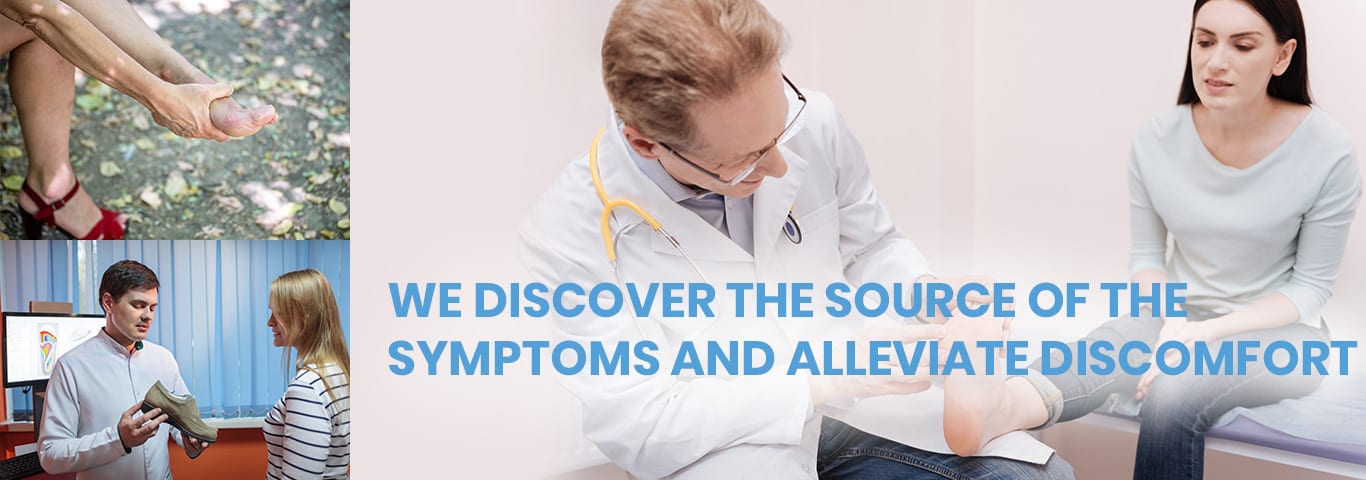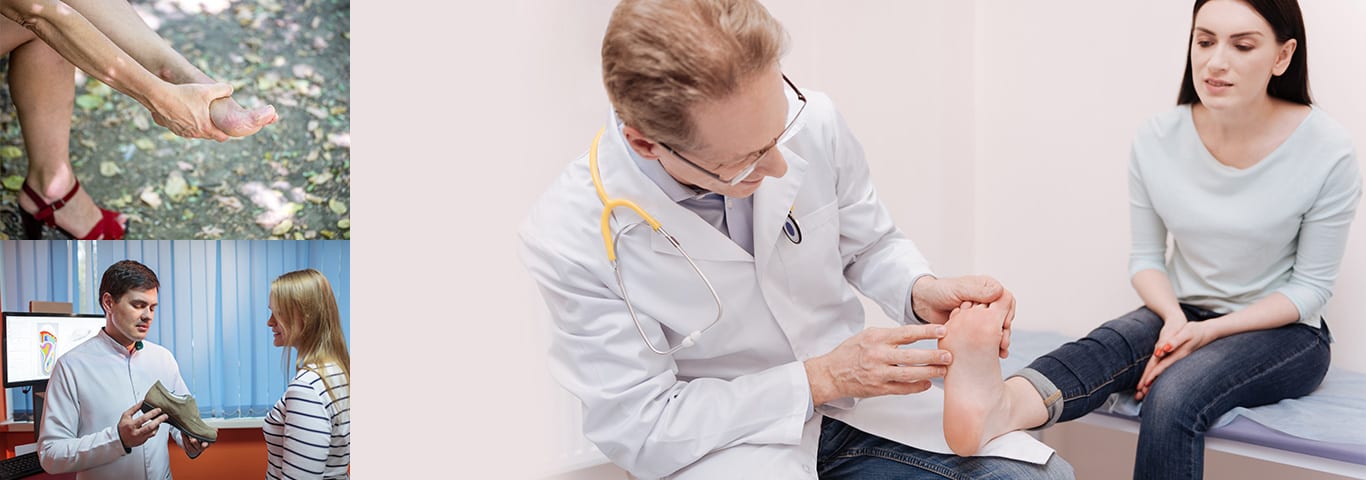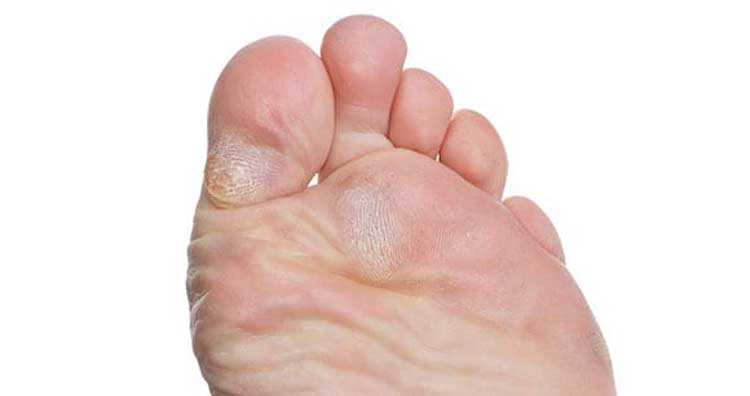
Discover how we can help you find relief from corns and calluses.
Typically appearing on feet and toes, calluses and corns are hardened layers of skin that build up slowly over time that can sometimes be painful. While unsightly and sometimes uncomfortable, these patches of skin can usually be treated by removing the source of friction that caused them to develop in the first place.
- When the feet are affected, this usually means changing shoes or using supportive devices.
- For patients with underlying health issues that affect circulation, extra care may be needed from a podiatrist to prevent further issues with feet.
What’s the Difference Between Corns and Calluses?
Smaller than calluses, corns also have an inner core. This inside part can be hard or soft. Corns that are soft are the ones usually found between toes. The harder ones often develop on the top part of toes. Usually larger than corns, calluses typically form on the soles of feet. Calluses aren’t usually painful, although some people do experience some discomfort if the affected part of the foot becomes irritated. Corns and calluses often form from wearing shoes that don’t fit right or footwear that’s too narrow for toes to move without rubbing against one another.
What Causes These Accumulations of Hard Skin?
Corns are usually caused by friction. Calluses are more likely to be caused by walking barefoot or repeated hard strikes on the ground while walking, jogging, or running. Corns and calluses aren’t contagious, nor is either one caused by a virus. You may be more likely to develop calluses if you have a foot deformity like flat feet. Corns and/or calluses sometimes form on top of other foot abnormalities such as bunions, hammertoe, or the bumps that may develop due to rheumatoid arthritis.
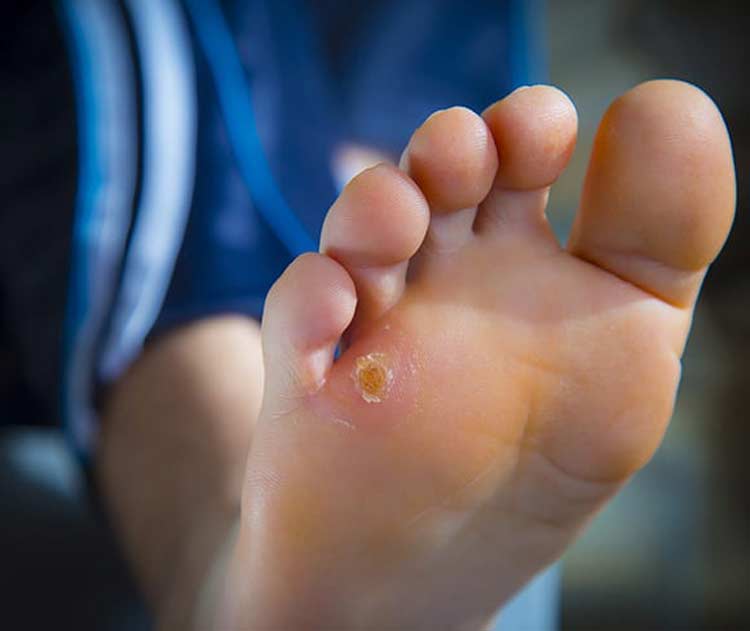
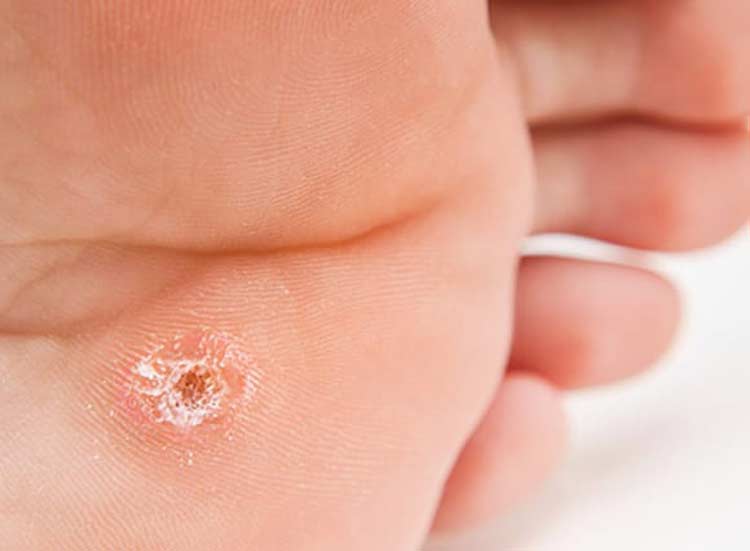
What Symptoms and Signs Should You Look For?
A rough area of skin is the most common symptom people with corns and calluses are likely to notice. A soft corn has the appearance of an open sore. Both corns and calluses may also have a grayish or yellowish appearance. You may also notice dry or flaky skin, tenderness in the affected area, or a bump that’s elevated.
Diagnosis
Diagnosis involves a visual inspection of the affected part of the foot or toe. You may be asked about what types of shoes you usually wear and what activities you typically do. You may also be asked about any pain you may be feeling because of corns or calluses. It’s usually not necessary to X-ray the foot unless there’s a suspected problem with the structure of the toe or foot.
Possible Treatment Options
Avoidance of the repetitive movements that likely caused either corn or callus to develop is usually the first recommendation for patients. A modification of activities may also be suggested. For instance, runners with calluses may benefit from making more of an effort to run on smoother, flat surfaces while also wearing more supportive shoes. With corns, a wider or deeper toe box on shoes may provide relief.
Protective padding that includes toe separators and toe sleeves and caps can also help corns and calluses heal. A pumice stone may help wear away callused skin on the bottom of feet. Some patients report positive results from soaking the affected foot in warm water. Neither calluses or corns should be cut away while attempting self-care, especially by patients with conditions that affect soft tissues.
In some instances, a podiatrist may observe how you normally walk and suggest changes you could make with how you place weight on your foot. For athletes with frequent issues with calluses and corns, paying attention to proper form while engaging in sporting activities may help prevent recurrence after treatment.
Is Surgery Recommended?
Surgery isn’t usually done specifically for corns or calluses. However, if there is an issue with a bone of the foot that’s causing frequent skin irritations and abnormalities, surgery may be performed. A podiatrist may also safely trim the corn or callus with a small knife during an in-office procedure.
Choose shoes that fit well to reduce your odds of developing calluses and corns. Be especially mindful of any pressure on the outside toes since there are the ones often affected. Cushioned insoles can also be helpful. Diabetics with calluses and corns need to be particularly careful since the hardened layer of skin that develops may hide a deeper wound or a more serious foot problem or infection. If you have any irritations or unusual growths on your feet, a podiatrist can determine if over-the-counter remedies will suffice or if other treatments are more appropriate.
